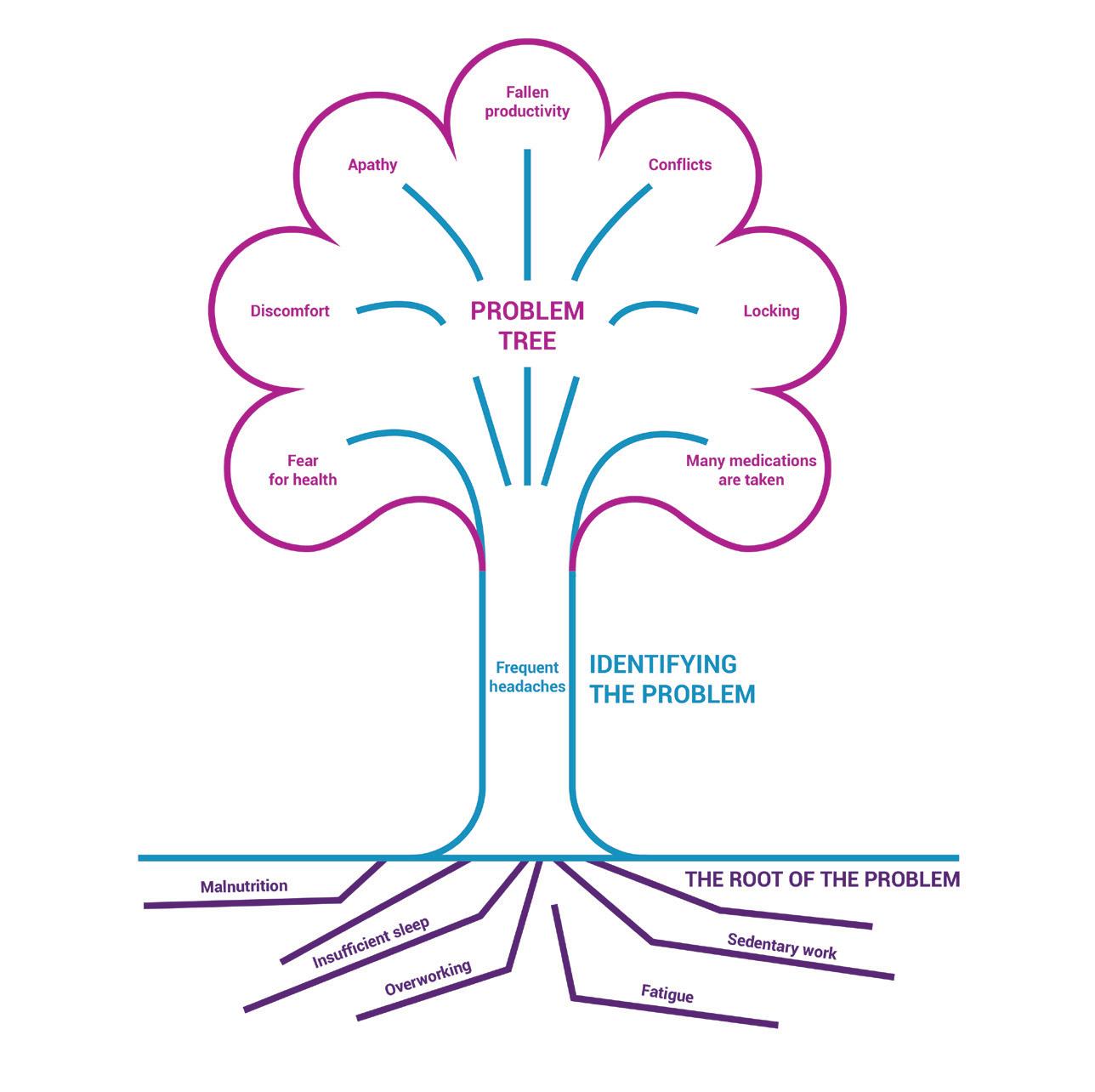MODULE: Goals and motivation SUBJECT TITLE: Problem solving and change management Gintarė Joteikaitė
Subject title
Purpose of the activity
Duration
Location and tools Number of participants
Problem solving and change management
To help a young person develop the skills needed to properly process information about emerging daily challenges in their personal lives and careers and to address emerging issues effectively.
3–4 hours.
Sheets of paper of various sizes, writing tools, projectors, flip charts, small candles, several matchboxes, pins, several tables into which the pins can be easily inserted.
10–25 participants.
Nine dots exercise Participants are grouped in pairs, they are given one writing tool and a sheet of paper on which nine dots are drawn. Participants are asked to both take the pen at the same time (it must be held by both participants) and to connect up all the dots without talking and lifting the pen from the paper.
Acquaintance/ team building methods
At the end of the exercise, the pairs introduce themselves, everyone says their name and shares how the process went. Each pair counts how many straight lines they needed to connect up all the dots. The most common answer is likely to be 6 straight lines, but some may be able to connect up all the dots with 5 straight lines as well. In the second part of the exercise, each participant is asked to draw nine dots individually and connect them up in four straight lines without lifting their pens. Most of the participants will try to complete this task without trespassing the boundaries of the dots. The training‘s leader then demonstrates a possible variant in which the connected straight lines are at the boundary of the dots. Participants are invited to discuss how, in their opinion, this exercise relates to the topic of problem solving.
Task no. 1 “Candle Challenge“ Time to complete the task: 20 minutes, time for reflection – 15 minutes. Practical tasks
78
Participants are divided into groups of 4–5 participants and they are provided with the following tools: a small candle, a matchbox, pins and a table to which the pins can be easily attached. Participants are asked to find a way to attach the candle to the table so that it remains stable. Participants are grouped in such a way that they cannot talk to each other and see what one group or another is doing.










